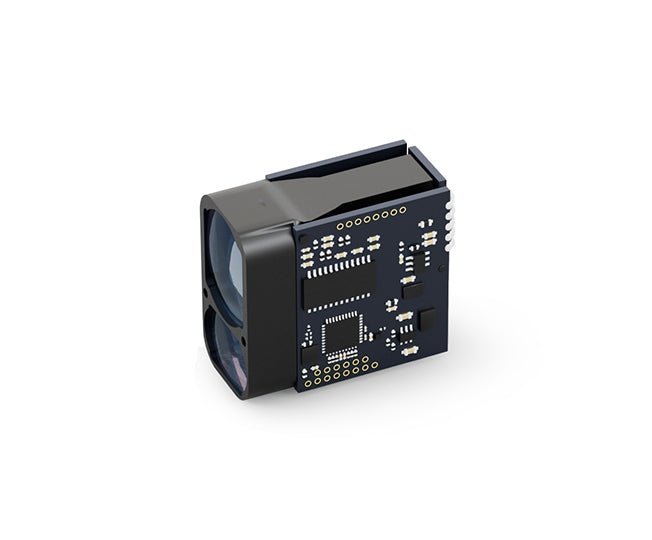1. Core Principles
Laser ranging modules measure distance using light-speed physics:
Pulsed Time-of-Flight (ToF):
Emits short laser pulses (typically 905nm or 1550nm infrared).
Calculates distance by timing the reflected pulse's round trip (Distance = (Speed of Light × Time Delay)/2).
Example: A 3μs delay ≈ 450m distance.
Phase-Shift Detection:
Uses modulated continuous-wave (CW) lasers.
Measures phase difference between emitted/reflected waves for sub-mm precision.
2. Key Features
FeatureDescriptionRange5mm–5km (varies by power/sensor type)Accuracy±1mm (short-range) to ±1m (long-range)Speed0.1ms–1s per measurementEye SafetyClass 1 (harmless) to Class 4 (hazardous)
3. Critical Parameters
Wavelength: 635nm (visible, short-range) / 905nm (industrial) / 1550nm (eye-safe, long-range).
Power: 1mW–10W (higher power = longer range).
Interface: UART/I²C for robotics, CAN bus for automotive.
4. Real-World Applications
Autonomous Vehicles: LiDAR for obstacle detection (e.g., 905nm modules in Tesla’s sensors).
Construction: Handheld laser tape measures (±1.5mm error).
Space: Lunar/Mars landers use pulsed ToF for terrain mapping.
Pro Tip: For outdoor use, 1550nm lasers outperform 905nm in sunlight due to lower atmospheric absorption.


Share:
Photoresistors: Light-Sensitive Components Explained
The Science of Laser Rangefinders: Measuring Distance with Light
4 评论
uxer5c
uxer5c
rf3q2o
uoiwb0